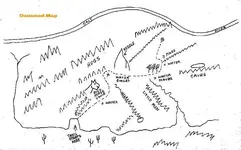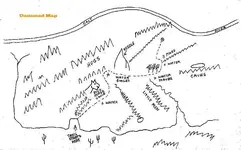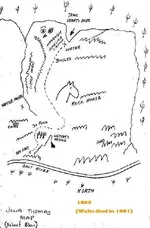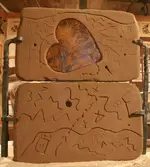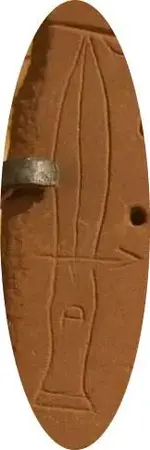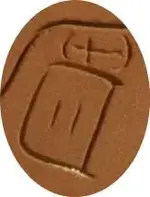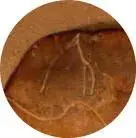EE THr
Silver Member
- #1
Thread Owner
The "Peralta" Stone Maps --- On Their Own
There are lots of theories about who might have made them, when they were made, where they were made, why they were made, and whether they were found or stolen.
But the only thing that is for certain, is that there are some stone maps, commonly refered to as "The Peralta Stones," and that, whatever they are, they do exist. That is the only thing, I think, that is absolutely known about them.
There seems to have been several copies made, at various times, by various people, as can be seen by the different photographs of them having stone colors, and stain colors and patterns, which are not the same.
And there are some photographs of them on a car belonging to Travis Tumlinson. These are supposedly the earliest images of them.
Beyond that, the only solid evidence is the Stones themselves. Everything else is just conjecture, and although some evidence of their origin seems very convincing, it's a mighty foggy subject.
And that is the reason for this topic title.
Do the maps, themselves, tell their own story?
It would help to have good, high resolution, photographs of the originals---but there are so many copies, how does one know which is which?
There are lots of theories about who might have made them, when they were made, where they were made, why they were made, and whether they were found or stolen.
But the only thing that is for certain, is that there are some stone maps, commonly refered to as "The Peralta Stones," and that, whatever they are, they do exist. That is the only thing, I think, that is absolutely known about them.
There seems to have been several copies made, at various times, by various people, as can be seen by the different photographs of them having stone colors, and stain colors and patterns, which are not the same.
And there are some photographs of them on a car belonging to Travis Tumlinson. These are supposedly the earliest images of them.
Beyond that, the only solid evidence is the Stones themselves. Everything else is just conjecture, and although some evidence of their origin seems very convincing, it's a mighty foggy subject.
And that is the reason for this topic title.
Do the maps, themselves, tell their own story?
It would help to have good, high resolution, photographs of the originals---but there are so many copies, how does one know which is which?



